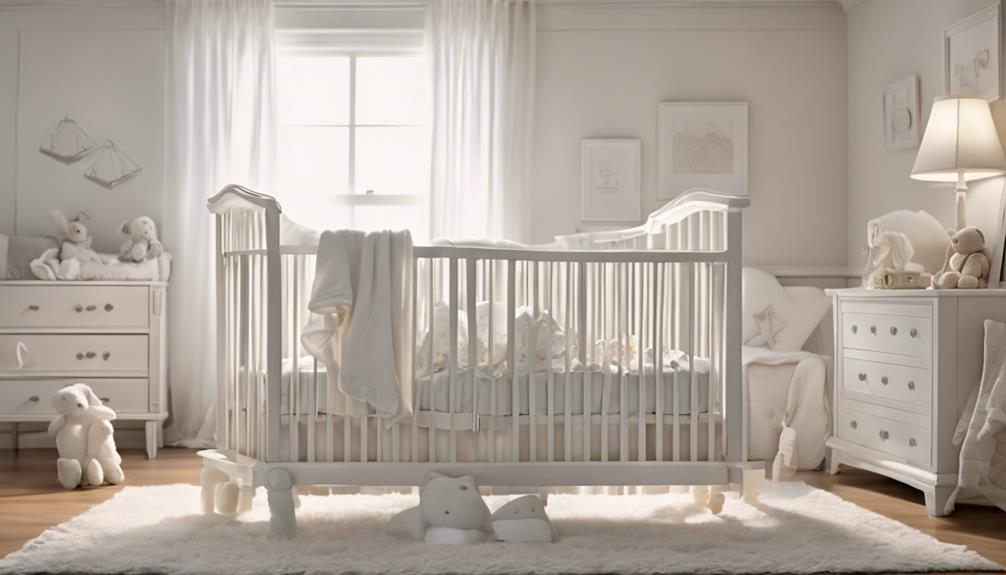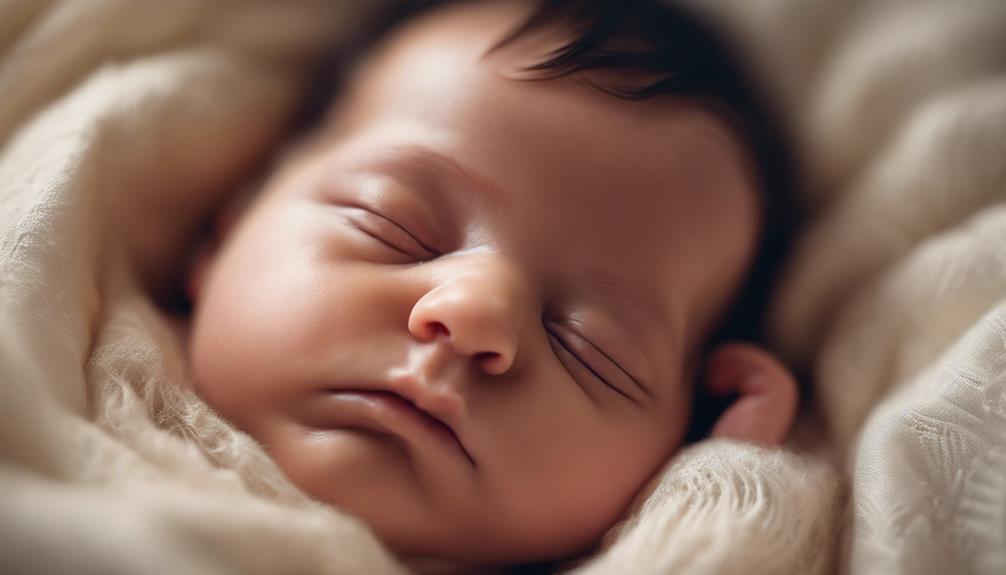As parents, we may not be aware that pacifiers can play a vital role in promoting safe sleep for newborns.
Have you ever wondered about the guidelines for introducing pacifiers to your little one? Understanding the benefits and potential risks is essential for making informed decisions.
Let's explore how pacifiers can be a valuable tool in creating a secure sleep environment for your newborn while considering the expert advice on their safe and effective use.
Key Takeaways
- Pacifiers reduce SIDS risk and promote healthy sleep patterns.
- Introduce pacifiers safely to enhance newborn well-being.
- Choose age-appropriate pacifiers for comfort and safety.
- Guide on weaning off pacifiers for oral health and sleep safety.
Benefits of Pacifier Use for Newborns
Using a pacifier provides newborns with numerous benefits that promote their comfort and well-being. The act of non-nutritive sucking with a pacifier not only soothes babies but also encourages healthy sleep patterns. This can be a game-changer for exhausted parents seeking a peaceful night's rest. Additionally, pacifiers play an important role in reducing the risk of Sudden Infant Death Syndrome (SIDS) during sleep, offering parents peace of mind while their little ones slumber. The American Academy of Pediatrics supports pacifier use for all sleep episodes, including naps and nighttime sleep, emphasizing the safety and benefits they provide.
For breastfed babies, pacifiers don't lead to nipple confusion and can offer a source of comfort and relief. The release of endorphins in the brain when using a pacifier promotes relaxation and helps in regulating emotions for infants. Overall, incorporating a pacifier into your baby's routine can be a safe and effective way to enhance their well-being and promote better sleep habits.
Safely Introducing Pacifiers to Newborns
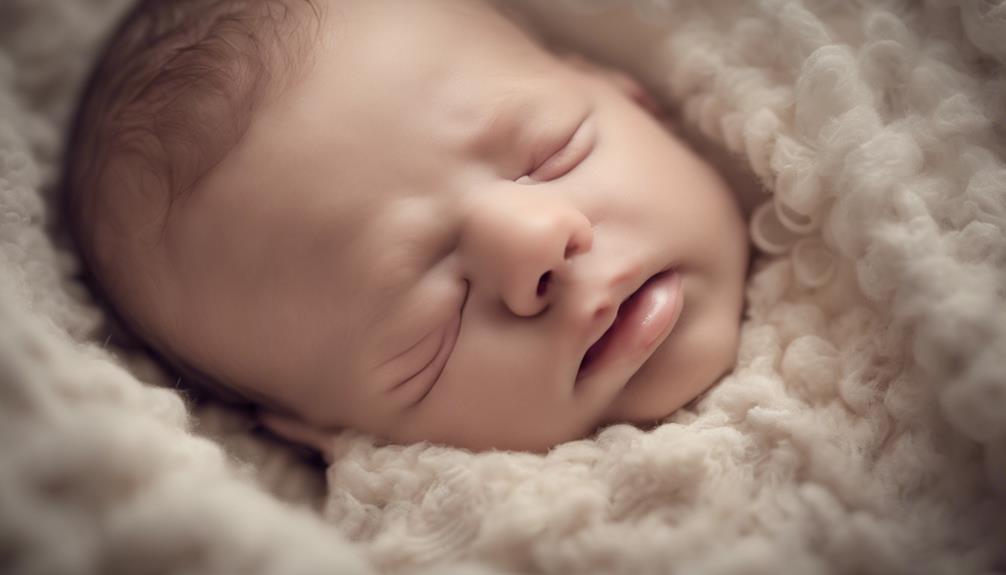
When introducing pacifiers to newborns, it's important to approach the process with patience and gentle guidance to help them find comfort and soothing benefits. As you navigate this stage, remember to follow safe sleep guidelines to reduce the risk of any adverse effects.
Here are some tips to help you introduce pacifiers to your newborn:
- Apply gentle pressure: Encourage your newborn to accept the pacifier by gently pressing it against their tongue. This can help them understand how to use it for soothing benefits.
- Offer variety: Try out different pacifier shapes and brands patiently to see which one your baby prefers. Each newborn may have a different preference, so exploring options can be beneficial.
- Consistent introduction: Make it a daily practice to introduce the pacifier for about a week. Consistency can help your newborn get accustomed to the pacifier and increase the chances of success.
Choosing the Right Pacifier
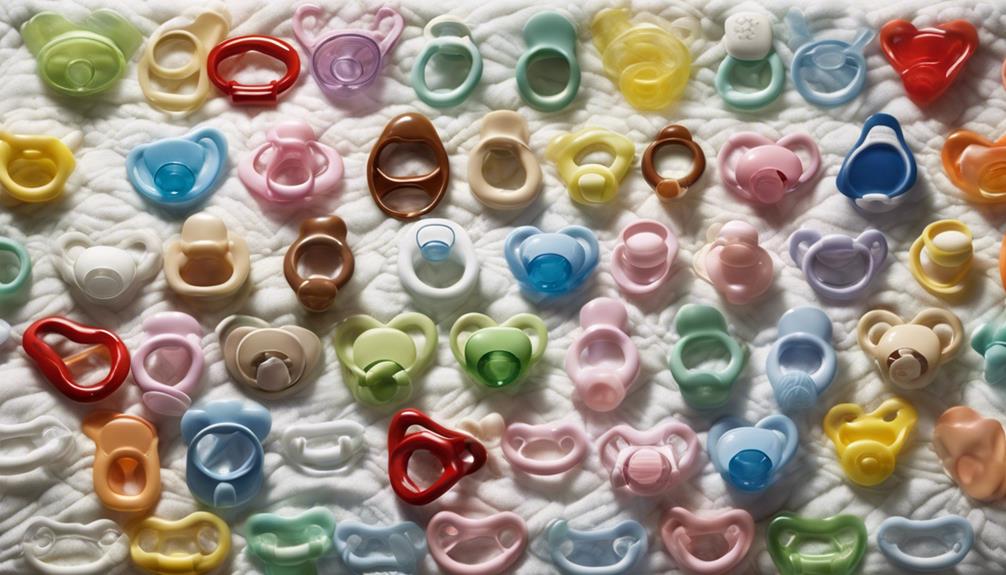
To guarantee your newborn's comfort and safety, selecting the appropriate pacifier tailored to their age and developmental stage is essential. When choosing a pacifier, it's important to take into account the correct size indicated on the packaging to make sure a proper fit and prevent any choking hazards.
Having extra pacifiers on hand is advisable to quickly replace any worn-out or damaged ones, maintaining a safe environment for your little one. Regularly inspect the pacifiers for signs of wear and tear, discoloration, or stickiness after washing to make sure they're in good condition for use.
Opting for one-piece silicone pacifiers can help minimize the risk of choking and ensure safe pacifier use. By being mindful of these factors and selecting the right pacifier for your newborn, you can provide them with a soothing and secure experience during their sleep time.
Creating a Safe Sleep Environment
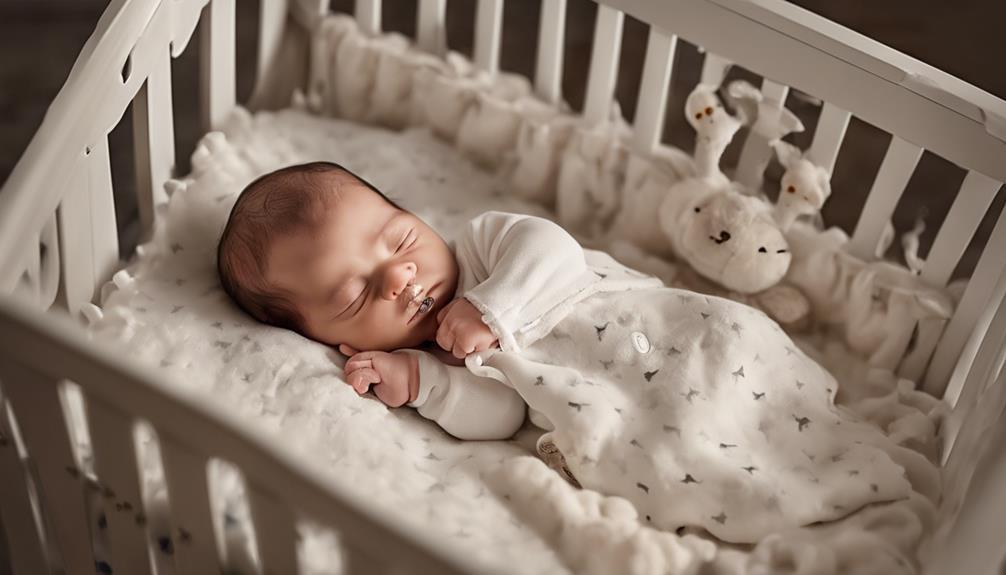
Ensuring your newborn's safety during sleep is paramount, starting with placing them on their back to reduce the risk of Sudden Infant Death Syndrome (SIDS).
To create a safe sleep environment, consider the following:
- Use a pacifier: Offering a pacifier at naptime and bedtime has been shown to reduce the risk of SIDS.
- Opt for room sharing: Keep your baby's sleep area in the same room where you sleep for the first 6 months to easily monitor them.
- Avoid soft objects: Keep the sleep area free of soft objects and loose bedding to prevent suffocation risks.
When to Stop Pacifier Use

Considering the potential impact on your child's oral health and development, it becomes important to address the appropriate timing and method for discontinuing pacifier use in infants.
The American Academy of Pediatrics suggests weaning off pacifiers by 6 months to reduce the risk of Sudden Infant Death Syndrome (SIDS). Prolonged use can result in dental issues such as misalignment of teeth.
It's advisable to gradually reduce pacifier use between 6-12 months to prevent abrupt changes and dependency. If the pacifier interferes with speech development, it's vital to discontinue use for your child's oral health.
Consulting a pediatrician can provide guidance on the right timing and method to stop pacifier use. By being mindful of these factors and taking proactive steps, you can promote a smooth shift for your child while promoting their overall well-being.
Frequently Asked Questions
Is It Safe for a Newborn to Sleep With a Pacifier?
Yes, it's safe for newborns to sleep with a pacifier. It can reduce the risk of SIDS. The American Academy of Pediatrics recommends using pacifiers for all sleep episodes. They promote calmness during sleep. It's important to introduce them after breastfeeding is established.
How Do You Use a Pacifier to Prevent Sids?
To prevent SIDS, we recommend offering a pacifier at naptime and bedtime. This simple practice can help babies regulate their breathing, stay calm, and keep their airway open during sleep. It's a safe and effective way to promote safe sleep.
Can I Give My Breastfed Newborn a Pacifier?
Absolutely, you can give your breastfed newborn a pacifier once breastfeeding is established, usually around 3-4 weeks. Pacifiers offer comfort and sucking benefits. It's wise to consult a pediatrician before introducing one.
How Do I Keep My Baby's Pacifier in His Mouth While Sleeping?
We position our baby on their back to naturally keep the pacifier in while sleeping. A pacifier clip can help prevent it from falling out. Choosing a comfortable shape encourages baby to keep it in.
Conclusion
To sum up, pacifiers can offer numerous benefits for newborns when used safely and appropriately.
While some may have concerns about pacifier use interfering with breastfeeding, waiting until breastfeeding is established can help mitigate this issue.
By selecting the right pacifier, creating a safe sleep environment, and following expert recommendations, parents can help their newborns soothe and sleep more soundly.
Remember, always consult with your healthcare provider for personalized advice on pacifier use.





